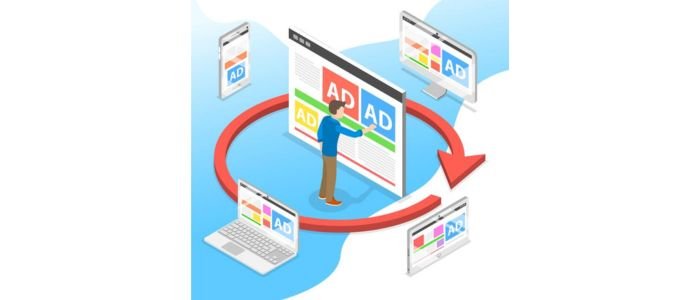A Guide to Using Social Media Ads to Reach Patients & Families
In today’s digital world, patients and families look for healthcare providers in a very different way. Gone are the days when local directories and word-of-mouth were the main sources of information. Now, people start their search online by seeking credible information, comparing treatment centers, and reading reviews before making a decision. Latest data shows that 5.41 billion people use social media worldwide as of July 2025, over 65% of the global population. This digital shift has made it necessary for recovery centers to meet patients where they already spend their time. Social media platforms like TikTok, Facebook, and Instagram provide various opportunities to do this. These platforms have become a safe space where people connect with supportive communities, share personal experiences, and seek advice.
For treatment centers, this means they can respond in the moments of need. Social media ads enable treatment facilities to build trust by reassuring families that help is available, highlighting the center’s services, and sharing educational resources. These ads can turn interest into action by encouraging a direct phone call to your admissions team and driving qualified leads to the website. By using social media ads strategically, treatment centers can reach the patients at the right time and guide them to get help.
12 Ways to Use Social Media Ads to Reach Patients & Families
Social media advertising has evolved how addiction treatment facilities reach patients and families searching for help. Recovery centers can now meet them when they are searching for treatment options on platforms like LinkedIn, TikTok, Facebook, and Instagram. These platforms allow you to encourage action at the right moment, educate your audience, and build awareness.
Whether you are sharing educational resources, increasing admissions, or looking to generate calls, strategically using social media ads can help you guide families through their decision-making journey. Below are actionable ways to make the most of social media ads and connect with patients who need you.
1. Understanding Your Audience
Knowing your audience is the first step in designing an effective campaign. Family decision-makers, caregivers, and patients have different concerns and needs; therefore, your messaging must reflect this.
Audience Segmentation

- Interests: Addiction education, recovery support groups, and health topics.
- Location: Target by ZIP code, city, or radius around your recovery center.
- Demographics: Education level, gender, age.
Optimizing for Call
Campaigns can be optimized for direct calls. It is best for recovery centers that depend on conversations to screen admissions. This makes pay-per-call advertising a powerful way to ensure that your treatment center attracts only high-quality leads.
2. Choosing the Right Platform
Different social media platforms serve various purposes. Choosing the right one guarantees that your message reaches the right audience. The table below will help you in opting for the platform that is according to your recovery center’s goals and standards.
| Platform | Strengths | Best Use | Content Style | Call-to-Action Options |
| Massive reach | Caregivers and families | Videos and carousel ads | Click-to-call and lead forms | |
| Visual storytelling | Younger audiences | Reels and stories | DM and Link-in-Bio | |
| TikTok | Short-form video | Awareness campaigns | Educational and relatable clips | Profile link and comments |
| B2B focus | Referral sources and professionals | Thought leadership posts | Contact forms | |
| YouTube | Long-form content | Deep education | Explainers and testimonials | Call extensions |
Platforms like Facebook and Instagram allow ‘Click-to-Call’ ads, which are perfect for patients and families who want help immediately.
3. Crafting High-Converting Ads Creatives
The ad creatives must balance between clarity and compassion. Always remember that families look for treatment and are overwhelmed and stressed. Carousel ads can demonstrate multiple programs and videos can show the treatment center’s staff and environment. This helps families to picture themselves taking the next step.
Key Creative Elements
- Visuals that Connect: Short explainer videos, staff photos, and warm imagery.
- Clear CTAs (Call-to-Action): ‘Get Support Today‘ or ‘Call Now for Help‘.
- Patient Testimonials & Stories: Real experiences create trust.
- Empathy-Driven Messaging: Use supportive language that reassures instead of shame.
4. Setting Clear Campaign Goals
Without any clear goals, it becomes hard to scale success. Decide what results matter most before you start running any ads.
Goals Could be
- Awareness campaigns for your brand.
- Appointment bookings.
- Direct phone calls to admissions.
- Leads via website forms.
Pay-Per-Call Advantage
With pay-per-call, you pay only for calls that meet a set and specific criteria to maximize ROI. This model works best for treatment facilities focused on qualified admissions instead of just website traffic, and solutions like Addiction Treatment Calls make it easier to get real-time and high-quality inbound calls from encouraged patients.
5. Leveraging Lookalike Audiences & Retargeting
People usually don’t convert on their first interaction. Retargeting builds trust with the passage of time and keeps your treatment center visible. This approach increases the likelihood of getting qualified calls from families who want to commit to treatment and lowers costs.
How to Retarget Effectively?
- Create lookalike audiences to reach new people similar to previous inquirers.
- Remind them of service with helpful and gentle messaging.
- Show ads to people who visited your website but did not take action.

6. Sensitivity & Compliance
Addiction treatment center advertising requires an extra layer of care. You should respect privacy and stay compliant. Sensitivity prevents your ads from feeling exploitative during helpless moments and builds trust.
Best Practices
- Ensure all creatives are inclusive and respectful.
- Use non-stigmatizing language.
- Follow HIPAA guidelines and never share identifiable health data.
7. Optimizing & Measuring Results
Data helps in understanding where you can improve and what is working. Call tracking tools can link calls back to specific campaigns. This lets you double down on what could be generating the most qualified leads.
Metrics to Track
- Conversion Rates: Booked consultations or track admissions.
- Call Duration & Volume: Shows if ads drive meaningful conversations.
- CPC (Cost-Per-Click): Helps manage spend efficiency.
- CTR (Click-Through-Rate): Measure ad engagement.
8. Collaborating with Advocates & Influencers
Partnering with trusted voices in mental health or recovery advocacy can boost the reach of your message. When combined with paid ads, influencer content gets high engagement and feels more authentic.
Collaboration Ideas
- Sharing community stories that inspire hope.
- Sponsored posts from recovery influencers.
- Guest appearances on live Q&A sessions.
9. Creating a Smooth Patient Journey
Your ads must guide patients seamlessly from the stage of curiosity to action. A flawless experience encourages families to follow through and prevents drop-offs.
Optimizing the Journey
- Ads → Dedicated landing page → Simple form → Phone call.
- Remove distractions on landing pages to keep focus on conversions.
- Include a CTA of a ‘Call Now’ button clearly for urgent inquiries.
10. Integrating Organic Social with Paid Ads
Organic and paid marketing efforts work best together. This strategy reduces ad costs over time and warms up cold audiences.
Best Approaches
- Retarget those who engaged with organic content previously.
- Amplify high-performing posts with paid ads for greater reach.
- Use organic posts to build trust.
11. Geo-Targeting for Local Reach
Since not all addiction treatment facilities serve nationwide, there are many regional and local ones. This ensures you are only reaching families who can access your service realistically.
Geo-Targeting Options
- Combine with local keywords for maximum relevance.
- Show ads during hours when the admission staff is available.
- Target by ZIP code, city, or tailor radius.
12. Timing Your Campaigns for Maximum Impact
What you advertise matters as much as when you advertise. A compassionate tone during vulnerable moments helps in encouraging immediate actions and building trust.
Timing Tips
- Adjust scheduling during crises to provide timely support.
- Increase ad visibility during awareness months.
- Run ads during weekends, evenings, and peak hours for families researching care.
How to Budget for Social Media Ads to Reach Patients & Families

A successful social media marketing strategy starts with a well-structured and realistic budget. Many treatment facilities spend money on ads without defining what they want in return, which leads to wasted resources. By aligning your budget with measurable outcomes and setting clear goals, you can ensure that each dollar results in generating genuine results, whether that is a direct phone call, booked assessments, or website leads.
Setting a Realistic Ad Spend
A good rule of thumb is to start small, analyze performance, and then measure after you see which campaign brings the most qualified calls. Before you run ads, consider the following:
- Define Goals: Do you want direct calls, lead generation, or brand awareness?
- Estimate Frequency & Reach: Use platforms to see how many people the budget can reach realistically.
- Allocate Monthly Budget: Break down spend by campaign type, like lead generation, retargeting, and awareness.
Key Metrics to Watch
Tracking metrics ensures that your ads deliver meaningful engagement that leads to admissions, and ads generate traffic. Understanding ad performance metrics is important for making informed decisions.
- CPCall (Cost-Per-Call): The cost of every qualified call is important for call-driven campaigns.
- CPL (Cost-Per-Lead): Total spend divided by the number of generated leads.
- CPC (Cost-Per-Click): How much you are paying for every ad click.
The Pay-Per-Call Advantage
For many addiction treatment facilities, a phone conversation is an important step in the admission process. Pay-per-call marketing aligns with your goal and budget by charging you only for calls that meet pre-defined criteria, like caller location, time-of-day, and duration.
Benefits of Pay-Per-Call Advertising
By combining pay-per-call campaigns with a clear budget strategy, treatment facilities can keep their ad spend focused on results that matter. This connects with patients and families who want to take action.
- Easier ROI tracking via call outcomes and duration.
- Higher lead quality, since callers are looking for help.
- Pay only for calls that convert.
Conclusion
Social media marketing gives treatment facilities the ability to connect with patients and families in different ways. It is about creating an experience that inspires action and trust. Successful campaigns focus on providing simple paths to get help, offering clarity during moments of uncertainty, and meeting people with compassion. By considering your ads as a bridge, you can position your treatment center as a supportive partner in the recovery journey. Each call, click, or impression is an opportunity to make someone feel supported and heard. When executed with strategy and empathy, social media ads can become a lifeline that guides patients towards care and life-changing treatment.
FAQs
What are the benefits of using social media for targeted ads?
Social media allows you to target ads by behaviors, interests, and demographics, ensuring your message drives higher conversions and engagement and reaches the right audiences.
What is the role of social media in addiction treatment marketing?
Social media helps addiction treatment marketing connect with patients and families, educate them, and build trust. When used ethically, it becomes a powerful tool for support and outreach.
How does social media affect the relationship between patients and treatment facilities?
Social media allows treatment centers to improve treatment compliance, encourage healthy habits, and educate patients, ultimately strengthening engagement and trust. This further helps in generating leads organically.
Can I run pay-per-call campaigns on social media platforms?
Yes. You can run pay-per-call campaigns on social media platforms by sending users to tracked phone numbers on landing pages integrated or via a click-to-call ad format.
Can pay-per-call ads and organic social ads work together?
Yes. Paid call campaigns capture intent, and organic content builds trust; retarget users who engage organically with call ads.


Leave a Reply